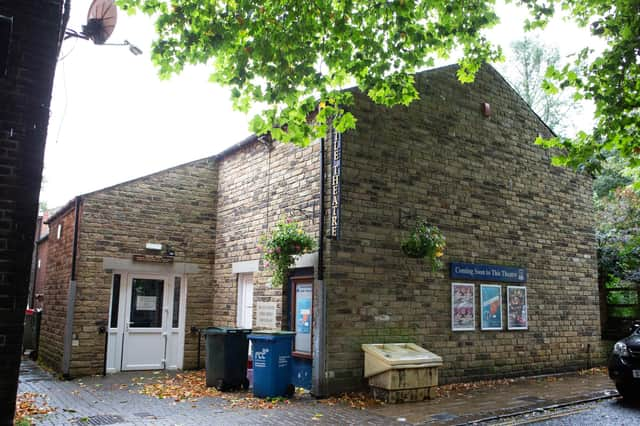Hebden Bridge Little Theatre: An illustrated history 1924 – 2024


By Sheila Graham, Hebden Bridge Local History Society
To help celebrate its centenary, Vaughan Leslie has been working to digitise the memorabilia, from programmes and reviews to set designs and cast photographs.
The result is a comprehensive Centenary Album, a digital archive and an exhibition at the Town Hall throughout May.
Advertisement
Hide AdAdvertisement
Hide Ad

Members of Hebden Bridge Local History Society had the chance to hear the story from Vaughan, a long time member of the Little Theatre, with many acting and directing performances under his belt.
The theatre started modestly in 1924, when members of the Literary and Scientific Society decided to move from reading to performance, for just two nights at the Co-operative Hall. This became an annual event with healthy audiences.
It was a rather nomadic society, and its longevity lies in the enthusiastic members rather than a building.
They experimented with productions in the new Picture House, before moving in 1931 into the band pavilion in Calder Holmes park, carrying 200 chairs from the nearby Grammar School for performances.
Advertisement
Hide AdAdvertisement
Hide AdBut there was a tremendous appetite for theatre in the town with total attendances for a season rising from 3,000 to 9,000 between 1931 and 1935.
At this time the suitably dramatic logo was designed, by Jimmy Henderson, one of the founders. It depicts Art rising from Industry, and still retains its impact.
But this didn’t mean security; in 1935, the council decided to use the space for a recreation ground, and the Little Theatre was evicted.
They eventually found a home on the ground floor of the Trades Club, which was converted into a 300 seat theatre.
Advertisement
Hide AdAdvertisement
Hide AdFor the first time they were able to have scenery, and set-design grew more ambitious.
In 1939, it must have seemed as if it was all about to be snatched away again, but the government encouraged theatres to stay open, to boost morale.
Attendances during the war averaged 9,000 per year, with some poignant notices about the necessity for gas masks, and absolving the company from responsibility for damage from enemy action.
The Ground Floor remained their home until 1977, but high costs meant that the Little Theatre was on the move again, eventually raising the money to build a new theatre opened in 1983, in old garage premises on Holme Street.
Advertisement
Hide AdAdvertisement
Hide AdThe intimacy of this tiny theatre brought the audience very close to the action; the first row took cover before a bayonet charge in a production of Oh, What a Lovely War!
The final stage in the story of the Little Theatre came when the tiny Garage Theatre was subject to an arson attack, and the members again took upon themselves the daunting task of building a new theatre.
The result of heroic efforts is the Little Theatre more or less at it now stands – a permanent home and tribute to the spirit of all those who loved the theatre over the century.
Vaughan paid special tribute to the late Ray Riches, who epitomised that spirit.